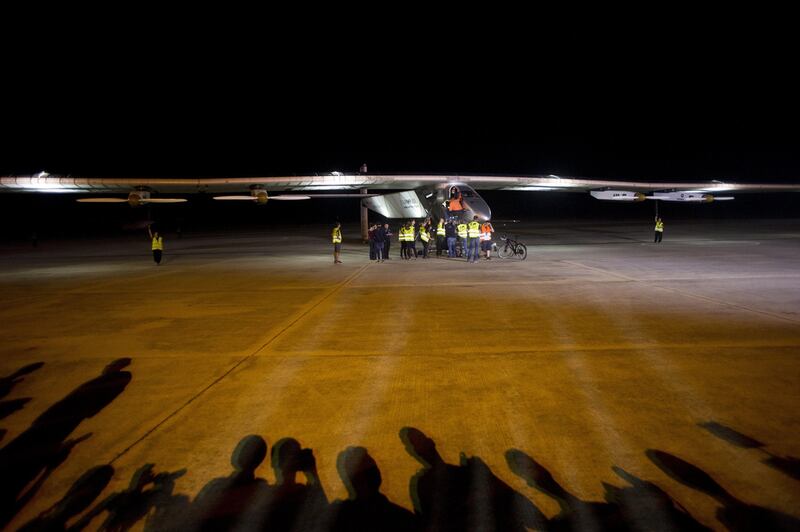CHONGQING // Solar Impulse 2 landed in Chongqing, China, at about 9.40pm UAE time on Monday, after flying 1,375 kilometres from Mandalay.
Unfavourable weather conditions presented challenges to pilot Bertrand Piccard, with forecasted winds of up to 40 knots.
“We were kind of worried due to the weather conditions because the plane is extremely dependent on that,” said Hasan Al Redaini, the Emirati member of the team. “It arrived today in Chongqing but it was supposed to fly to Nanjing where I am, but it didn’t because of a heat charging issue, which means there was not enough power to charge the plane.”
He said he would wait to see if the weather improved today to fly.
“If not, it will have to wait,” he said. “The weather should be very accommodating for them to fly. The challenge is landing before 8pm because afterwards, there is a lot of disturbance from the wind and the weather gets a bit rough, so there is quite a challenge logistically, and time constraints.”
Mr Al Redaini said there was no schedule to abide by because everything was improvised based on the current situation. “It’s very complex,” he said. “There are many factors that come into play.”
These included navigating over mountain ranges and bad weather. “The next possible flight date is not confirmed,” he said.
Raymond Clerc, Solar Impulse mission director, said the problem was that the team was originally hoping for an immediate flight onwards to Nanjing. “We spent a lot of time analysing different solutions,” he said.
“We decided to take the safe way and postpone the flight to Nanjing.”
He said he was unsure about the weather for the next few days.
“We’ve already started to search for a better solution,” he said. “We just need to find another solution for Nanjing. Safety is first.”
Earlier during the flight, from an altitude of 24,000 feet, Mr Piccard tweeted a photo of himself eating a meal of tabbouleh, quinoa and spelt.
The team emphasised that the current leg of the plane’s round-the-world journey was expected to be the most physically demanding for the pilots.
They will need to use oxygen – required in the unpressurised cockpit – and, because they need to reach high altitudes to fly over the Himalayas, temperatures could dip to as low as -20°C.
Solar Impulse 2 began its journey in Abu Dhabi on March 9.
cmalek@thenational.ae
* With additional reporting by Emmanuel Samoglou





